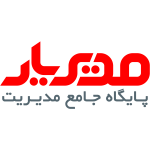اساس نظریه نقشهای مدیریتی آن است که باید با ملاحظه آنچه مدیر انجام می دهد، فعالیتها یا نقشهای وی را معین کرد. مینتزبرگ با مطالعه منظم فعالیتهای مدیران اجرایی پنج سازمان متفاوت، نتیجه می گیرد که مدیر برای انجام وضایف برنامه ریزی، سازماندهی، هماهنگی، و کنترل به فعالیتهای گوناگونی می پردازد. وی معتقد است که مدیر نقشهای ذیل را ایفا می کند:
الف) نقشهای متقابل شخصی
1. رئیس تشریفات (انجام وظایف اجتماعی و تشریفاتی به منزله نماینده سازمان)؛
2. رهبر؛
3. رابط (بویژه در مواجهه با افراد خارج از سازمان).
ب) نقشهای اطلاعاتی
1. گیرنده (اخذ اطلاعات مربوط به عملیات یک واحد سازمانی)؛
2. نشر دهنده (ارائه اطلاعات به کارکنان)؛
3. سخنگو (انتقال اطلاعات به خارج از سازمان).
ج) نقشهای تصمیم گیری
1. سوداگری؛
2. آشوب زدایی؛
3. تخصیص دهنده منابع؛
4. مذاکره کننده.
البته نباید وظایف مدیریتی نادیده گرفته شوند؛ در واقع نقشهایی که مینتزبرگ مطرح می سازد، جلوه هایی از بسیج منابع، برنامه ریزی، سازماندهی، هدایت، و کنترل محسوب می شوند؛ نا گفته نماند که نقشهای متقابل شخصی، در نتیجه اختیارات رسمی و همراه با منصب و مقام مدیر پایدار می شوند و بر تعامل مدیر با افراد داخل و خارج سازمان دلالت دارند و زمینه ساز ایفای نقشهای اطلاعاتی محسوب می شوند؛ به این ترتیب به دلیل افزایش امکان دسترسی مدیر به اطلاعات مورد نیاز در سازمان، زمینه ایفای نقشهای تصمیم گیری را فراهم می کند تا مدیر بتواند برای حل مسائل و یا استفاده از فرصتها، به نحو مطلوبتری تصمیم بگیرد.
آدزیس برای اداره مؤثر هر سازمان، اهتمام مدیر به ایفای نقشهای چهارگانه تولیدی، اجرایی، ابداعی، و ترکیب کنندگی را لازم می داند. هر یک از این نقشها، با یکی از خرده سیستمهای “سیستم اجتماعی” ارتباط دارد؛ توضیح اینکه، هر سازمان بازرگانی، صنعتی، یا اداری یک سیستم اجتماعی است و بیشتر سیستمهای اجتماعی از خرده سیستمهای به هم پیوسته متعددی تشکیل شده اند؛ نظیر خرده سیستمهای “انسانی- اجتماعی”، “اداری- ساختاری”، “اطلاعاتی- تصمیم گیری”، “فن آوری- اقتصادی”.
در نقش تولیدی مدیر باید نتایجی برابر با رقیب، یا بهتر از آن کسب کند. میزان شایستگی هر مدیر موفق و مؤثر، وابسته به میزان دانش حرفه ای وی در مورد کارش است؛ خواه رشته کاری وی بازاریابی باشد، خواه مهندسی، خواه حسابداری یا یک رشته دیگر. مدیر در نقش تولیدی در چهار چوب خرده سیستم “فن آوری- اقتصادی” فعالیت می کند.
پرکار بودن و داشتن مهارت فنی، برای موفقیت مدیر کافی نیست. مدیر باید علاوه بر مهارت فنی و پشتکار، توان هدایت و استفاده از افراد خود را داشته باشد؛ یعنی باید مراقب باشد که این افراد نیز به طور مفید به کار گرفته شوند. مدیر در نقش اجرایی خود، برنامه زمانبندی شده ای تهیه می کند و به ایجاد هماهنگی، اعمال کنترل، و برقراری انضباط می پردازد. مدیر باید مراقب باشد تا سیستم به گونه ای کار کند که برای آن طراحی شده است. مدیر در نقش اجرایی، در چهارچوب خرده سیستم “اداری- ساختاری” فعالیت می کند.
مدیرانی که در محیطهای پویا فعالیت می کنند باید بتوانند در ضمن ایفای نقشهای تولیدی و اجرایی خود، با بهره گیری از قدرت تشخیص و نوآوری، برای تصحیح و تغییر اهداف و ویژگیهای نظام اجرایی موجود اقدام کنند. در این نقش مدیر باید فردی مبدع و مبتکر باشد. مدیران مبتکر بر خلاف مدیرانی که صرفاً اجرا کننده اند، برنامه عملیاتی خود را تنظیم می کنند و روشهای اجرایی مناسب را بر می گزینند. مدیر در نقش ابداعی، در چهار چوب خرده سیستم “اطلاعاتی- تصمیم گیری” فعالیت می کند.
ایفای مجموعه نقشهای تولیدی، اجرایی، و ابداعی نیز برای موفقیت در انجام وظایف مدیریتی کافی نیست؛ زیرا بسیار اتفاق می افتد که یک سازمان موفق پس از کناره گیری مدیر مبتکر و خلاق خود سقوط می کند؛ برای آنکه سازمان همواره موفق باشد، مدیر باید نقش دیگری را نیز ایفا کند. این نقش، نقش ترکیبی است. مدیر در نقش ترکیبی، راهبردها و استراتژیهای فردی را به راهبرد گروهی، مخاطرات فردی را به مخاطرات گروهی، اهداف فردی را به اهداف گروهی، و ابتکارات فردی را به ابتکارات گروهی مبدل می کند. هرگاه یک گروه بتواند با اتکا به جمع خود و با تعیین اهداف روشن برای خود فعالیت کند، می توان گفت که مدیر آن گروه نقش ترکیبی را به طور مناسبی ایفا کرده است. ایفای نقش ترکیبی مستلزم وجود مدیری است که به نیازهای افراد خود واقف و نسبت به ارضاء آن نیارها کوشا باشد. چنین فردی می تواند کل سازمان را در جهت تحقق اهداف و راهبردهای آن متحد سازد. مدیر در نقش ترکیبی؛ درچهارچوب خرده سیستم “انسانی- اجتماعی” فعالیت می کند.
آدزیس بر این باور بود که اگر مدیر فقط به ایفای یکی از چهار نقش مذکور بپردازد، سبک مدیریت وی نادرست و نامطلوب خواهدبود. البته وی معتقد بود که مدیران اندکی وجود دارند که می توانند هر چهار نقش مدیریتی را به طور کامل ایفا کنند و در مدیریت خود از سبکی صحیح و درست بهره گیرند؛ زیرا این مدیران باید هم از تخصص فنی بالا، هم از قدرت اجرایی کافی، هم از توان ابداع و ابتکار مطلوب، و هم از قدرت ترکیب کنندگی لازم برخوردار باشند؛ به همین دلیل بندرت ممکن است مدیری پیدا شود که بتواند همه نقشهای مذکور را خودش ایفا کند. در واقع فراگرد مدیریت، باید برای ایفای نقشهای نسبتاً متضاد، ولی ممکن، چندین نفر را به کار گیرد؛ ولی نقش ترکیبی، نقشی است که همه مدیران ناگزیر از ایفای آنند؛ یعنی اگر یک مدیر توان ایفای نقشهای تولیدی، اجرایی، و ابداعی را نداشته باشد، می تواند از دیگران کمک بگیرد، ولی نقش ترکیبی را باید خودش عهده دار شود. اگر این نقش توسط مدیر ایفا نگردد، وی به فردی “سوداگر”، “بحران آفرین”، “بیش از حد مقرراتی” و “پرکار و تک رو” تبدیل خواهد شد.
The Managerial Roles Theory
The concept of “managerial role” was first introduced into the analysis of managerial work by H. Mintzberg in 1973. By the role he understood “a set of certain behavioral rules associated with a concrete organization or post” (18, p.36). Just like the characters of some play, managers, too, often perform different roles bound by their position. One can’t help but remember the famous lines, “All the world is a stage, and the men and women are merely players…”.
Thus, in addition to functions of management as parameters of managerial activities there appeared one more unit – managerial role. We will dwell upon the differences the two later on, and now we concern ourselves with the classification of roles grouped into the three blocks (18, с.37): interpersonal, informational and managerial proper (another name – decisional roles).
So, according to H. Mintzberg’s classification managers discharging their duties communicate with people, handle information and make decisions as the above-mentioned roles tell us. It should be born in mind that roles do not exist per se, with every manager they are interdependent and interrelated in such a way that they allow to describe the nature of managerial activities taking into account levels of managers and the specificity of production processes. Therefore, it is possible to define different types managers with the help of prevalent roles. For instance, managers ranking high on initiating structure and low – on consideration (according to the Ohio State classification) (18, p.495) are more likely to engage in decisional roles, less in – informational roles, and still less in – interpersonal roles.
It should be noted that H. Mintzberg’s approach is not the only classification of managerial roles. G.Yukl introduced a related concept of “dimensions of managerial behavior” and described 19 dimensions relevant to managerial activities (12, p.73-75).
G. Yukl’s approach comprising almost twice as many characteristics as H. Mintzberg’s gives a more detailed classification. At the same time, the two classifications have a number of similar or even identical positions. For instance, the informational role “disseminator of information” (H. Mintzberg) is completely covered by such dimensions of managerial behavior as “collection and dissemination of information”. It enables us to establish a rather close correlation between the two concepts (Table 1).
The results of their comparison prove that despite the fact that Yukl’s classification is more detailed and focuses on interactions inside the organization (on the link “manager – subordinate&qout;), there can be established a complete correlation between the two authors’ approaches. Here we will stick to the more compact classification of managerial roles given by H. Mintzberg, not missing a point.
In order to have a better understanding of the essence of managerial roles as descriptive units it will be expedient to compare them with other features of managerial activities describing them as a process, i.e. to compare them with the functions of management. This concept was introduced into the theory of management by Henry Fayol, the founder of classical organization school of management thought. He quite reasonably suggested that management should be viewed as a process, and argued that ” to manage means to forecast and plan, to organize and give orders, to coordinate and control ” (18,p.71). Thus, by the functions of management basic types of managerial activities viewed as certain stages in the process of goal attainment are understood (14,p.119). When considering processes of managing organizations with some specificity in their activities, different authors include other functions of management, such as decision making, marketing, etc. (6, p.18;17) Within this work we will confine ourselves to the consideration of the four basic functions which can be applied to practically all types of organizations. So, what is the difference between the two classes of concepts describing the many-sided process of management, i.e. between roles and functions?
Firstly, they differ widely in the range of managerial activity they cover. Functions represent broader characteristics which embrace results of the realization of several roles. For instance, planning involves the use of such roles as liaison, disseminator, entrepreneur and negotiator (occasionally); organizing implies such roles as liaison, representative, disturbance handler; motivating is connected with the roles of leader, resource allocator; and finally, controlling is based primarily on the roles of figurehead, monitor and disturbance handler.
Secondly, managerial roles belong to the sphere of managerial interaction with other people (subordinates, superiors and outsiders). Descriptions of examples from managerial practice requiring activation of this or that role consist mainly of contacts with other people, ceremonials, participation in meetings, research tours, surveys , interviewing, debating and negotiating. In other words, the role is that which manifests itself when managers interface with someone. In the first place it is peculiar to interpersonal and informational roles. In contradistinction to the roles, functions of management also involve managerial activities having nothing to do with contacts with others, such as working with documents, making plans, analysis of the company’s standing, decision making , etc. That is why interaction with people goes hand in hand with managerial roles, and functions of management may be fulfilled without communication with people.
And finally, functions of management and managerial roles reflect different aspects of the process of management. The former sort of split one global goal into several clear-cut subgoals of functions, and that is why they easily form a chain, ensuing one from the other, while the latter reflect various styles of manager – subordinate and manager – people other than subordinates interaction. In other words, functions of management represent the process of attaining the ultimate goal through a number of intermediate stages, while roles fill these stages with different variants of managerial interaction. In a simpler form this can be expressed by means of the following thesis: the functions of management answer the question, ” What do we do to accomplish our goals? “, the roles give possible variants of answers to the question, ” How do we interface with other people to reach our goals? “. And linking functions and roles to the three aspects of management singled out in Chapter 1, we may conclude that functions of management belong to the process aspect, while roles – to the instrumental aspect.
Consideration and analysis of managerial roles we shall finish by an exercise for self-examination which allows you to ponder on it on your own, to ‘try on’ H. Mintzberg’s ten roles.







